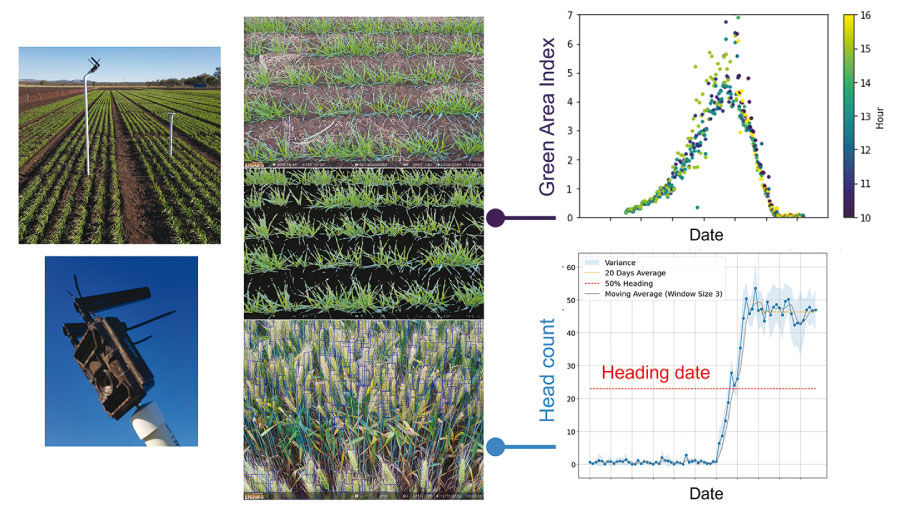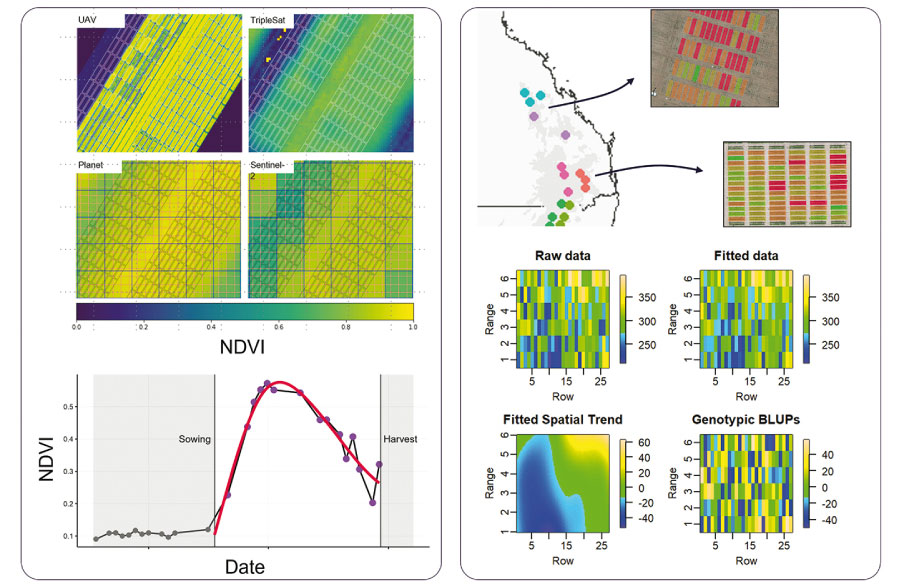Key points
- GRDC’s NVT Program is working with INVITA to provide improved, credible, faster crop variety data for growers, to help smarter variety selections for their own paddocks
- INVITA utilises advanced technologies such as imaging and drone data to improve variety selection, accounting for environmental effects
Leveraging an international initiative, Innovations in Plant Variety Testing in Australia (INVITA) is aiming to bring a step change to grower insights from National Variety Trials and other grains RD&E field trials.
Advances being made in plant variety testing in Europe are being used to strengthen and enhance Australian growers’ insights from GRDC’s National Variety Trials (NVT) program – the largest independent, coordinated grain crop evaluation trial network in the world.
NVT’s purpose is to generate credible information for growers and agronomists to help with variety choice.
GRDC invested in the Innovations in Plant Variety Testing in Australia (INVITA) project in 2020.
INVITA leverages advances being made within the Horizon 2020 European initiative INVITE – Innovations in Plant Variety Testing in Europe.
In Australia, INVITA is developing a platform for improving variety selection by accessing and developing enabling technologies and analytics solutions that will be deployed within NVT to support more-profitable selection decisions by Australian growers.
Heading INVITA at the University of Queensland is Professor Scott Chapman, who has long-standing ties with a key INVITE partner, Wageningen University in the Netherlands, a top-ranked university for agricultural research. CSIRO Agriculture and Food is the other major collaborator.
The two main goals for NVT through INVITA are to improve:
- the prediction of performance at single sites, augmented by the use of imaging on the ground and by drone, and using this data to account for spatial field variability; and
- the ability to account for variation in crop performance in relation to environmental effects.
Ultimately, the research seeks to understand what is the right variety for the wide mix of environmental conditions experienced across the Australian grains industry.
It has the potential to improve growers’ decision-making when it comes to selecting an appropriate variety for a particular environment and production system. Preliminary estimates indicate that INVITA methods that account for environmental information can improve variety yield predictions for specific seasonal conditions e.g., average conditions versus severe water stress.
Efficient monitoring of trials
INVITA monitors selected NVT sites intensively, integrating a diverse array of data sources including imagery, sensor data and manual observations to ensure comprehensive understanding of trial outcomes.
In field trials, the team utilises several methods for image collection at plot level, including static field cameras positioned at a 45-degree angle, handheld cameras or smartphones capturing images for each plot, and drone flights.
Describing in detail the sources of variability in these trials is crucial. These methods can capture variability in both spatial and temporal dimensions.
For monitoring temporal variations throughout the season, static field cameras are set up to capture images several times a day on a reference plot (Figure 1). INVITA uses advanced image processing techniques to infer plot-level crop status. For example, it allows for precise determination of the green vegetation cover throughout the season, representing a measure of wheat development for referencing satellite imagery. INVITA then analyses this data to understand the factors driving yield and other primary traits of interest.
This system can also support operations planning across the NVT trial network by providing real-time plot-level crop status to NVT staff and trial service providers.
By leveraging machine-learning algorithms, daily imagery data can also provide valuable insights into the timing and extent of heading (cereals) or flowering (pulses and so on) across trials.
Wheat crops are sensitive to stress occurring around heading stage, so having a precise determination of this stage provides critical information to identify environmental impacts that explain trial performance.
This technology is being tested by INVITA and adapted to different environments and wheat varieties evaluated in NVT.
Figure 1: Cameras are installed in the field to collect imagery data that can be analysed remotely for monitoring daily evolution of crop growth and heading dates using machine-learning detection algorithms

Credit: Javier Fernandez, University of Queensland
To analyse spatial variability, drone flights are used several times in the season. These drones are equipped with standard red, green and blue (RGB) cameras or with multispectral cameras that include near infrared (NIR) and near red-edge (NRE) wavelengths to match the spectral bands of satellite imaging.
The drone data is processed to generate detailed field maps at less than one-centimetre resolution. INVITA leverages the multi-scale integration of satellite imagery with drone and observational data to capitalise on the multispectral features and broad spatio-temporal coverage offered by satellites (Figure 2).
Learning from the past to understand the future
Since the project began, INVITA has developed methods to retrieve historical imagery of past NVT trials through a combination of geometry and machine-learning algorithms. Temporal indices are computed at each pixel of the images to investigate drivers of crop performance in previous seasons.
The information collected by INVITA can add to NVT another layer of understanding of how each variety responds to the environment.
INVITA also coordinates a range of efforts to measure and describe local soil and climatic conditions associated with the location of the trial and the consistency of that location across different years.
By coupling this data with physiological knowledge, researchers hope to develop indices or stress scores that provide a better representation of genotype-by-environment interactions across the NVT.
The methods developed through INVITA will improve insights from NVT and other grains RD&E field trials, providing growers with the environmental context and enabling better decision-making. There is also potential for developing automated, data-driven, on-farm, decision-making tools based on these processes for remove observation and inference of crop status.
Figure 2: Satellite and unmanned aerial vehicle imagery are used to measure the temporal and spatial variability in trials. In this way, INVITA aims to account for additional sources of variability in NVT, such as weather or soil, to generate better variety yield estimates.

Credit: Javier Fernandez, University of Queensland
More information: Javier Fernandez, j.fernandez@uq.edu.au

























































